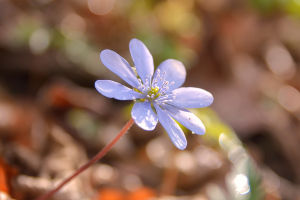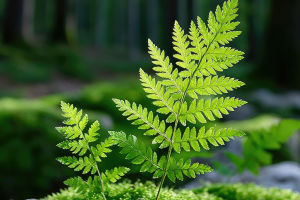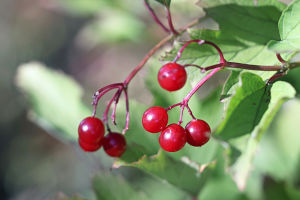Lykkers, have you ever noticed tiny green carpets in damp forests, along riverbanks, or in shaded corners of your garden? Those are liverworts, one of nature's quiet wonders.
At first glance, they might look like ordinary moss, but liverworts are special because some species produce tiny flowers or reproductive structures that emerge in early spring.
These miniature blooms are delicate yet vital, playing a key role in the plant's life cycle. Observing them closely can feel like discovering a hidden treasure on the forest floor, a little secret that nature keeps for those who take the time to look.
Understanding Their Tiny Flowers
The "flowers" of liverworts are not flowers in the traditional sense. They are reproductive structures called gametangia, which produce either male or female gametes. In some species, we can see tiny cup-like structures called archegoniophores and antheridiophores rising slightly above the leafy body. The colors are subtle—usually green, yellow, or pale pink—but they contrast beautifully with the surrounding leaves, catching the eye if we look carefully.
These structures are fascinating because they allow us to witness reproduction in one of the smallest and most overlooked plants on Earth. For anyone curious about plant life, liverworts demonstrate that even the tiniest organisms have complex reproductive strategies.
Where They Grow
Liverworts thrive in damp and shaded environments. We can often find them on moist soil, rocks near streams, forest floors, and decaying logs. Because they rely on water for fertilization, these conditions are perfect for them. Some species prefer temperate climates, while others flourish in tropical rainforests. Wherever they grow, liverworts create lush green mats that transform ordinary, shadowy areas into vibrant, living carpets.
Observing them, we can appreciate how these tiny plants contribute to forest ecology—they help retain moisture, prevent soil erosion, and provide microhabitats for insects and tiny invertebrates.
The Lifecycle of Liverworts
Lykkers, liverworts have a fascinating lifecycle that alternates between a leafy gametophyte stage and a sporophyte stage. The gametophyte is the dominant stage we usually see. When the tiny flowers release gametes, fertilization occurs, producing a sporophyte that eventually releases spores. These spores start the next generation of plants. Watching these stages in the wild can be mesmerizing.
We can see firsthand how even small plants have intricate lifecycles that ensure survival and adaptation in their environment. The process may be tiny, but it's a vivid example of life's resilience.
Why We Love Liverworts
We love liverworts because they are humble yet remarkable. They survive in shaded, damp corners where few other plants can grow, quietly forming intricate green carpets that delight our eyes. For nature lovers, photographers, or anyone enjoying a quiet walk in the woods, spotting liverworts feels like uncovering a secret world.
Their reproductive structures, small flowers, and gametophytes show that beauty doesn't have to be large or flashy to matter. It's in the details, Lykkers—tiny, intricate, and full of life.
Spotting Liverworts in Nature
If we want to see liverworts flowering, the best places are forests, riverbanks, and shaded garden corners with rich, moist soil. Early spring or just after rainfall is ideal because the reproductive structures are most noticeable then. When searching, we can gently lift rocks or leaves to find hidden patches, but we must be careful—they're delicate!
A magnifying glass helps reveal details invisible to our eyes, showing the tiny cup-like structures and subtle colors that make liverworts so special. Observing them slowly and patiently allows us to connect more deeply with the quiet wonders of nature.
Tips for Nature Photography
Lykkers, capturing liverworts in photos is tricky but rewarding. Use natural light from the side to highlight textures without washing out the green mats. A macro lens or smartphone with a macro mode works well to show the reproductive structures. Try photographing after a rain, when tiny droplets cling to leaves and add sparkle. Keeping the camera steady or using a tripod ensures clarity, and shooting from a low angle makes the liverworts look larger and more dramatic. With a little patience, we can capture images that reveal the hidden beauty of these tiny plants.
Discover Tiny Wonders
We hope this introduction to liverworts inspires you to pay closer attention to the small green carpets around us. Their tiny flowers, unique reproductive structures, and fascinating life cycles remind us that even the smallest plants have secrets and beauty to share.
Next time we wander through a forest or garden, let's slow down and look closely—these little wonders quietly enrich our world and make every walk more magical. Nature is full of surprises, Lykkers, and liverworts are proof that life thrives even in the tiniest corners.


